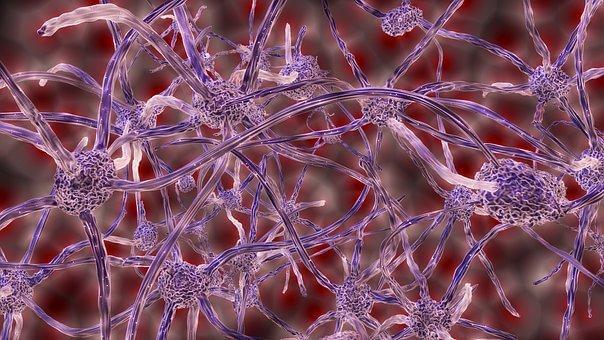We believe in professional growth of Physiotherapists with high technology!
Let’s understand Guillian Barre Syndrome!

(Pronounced as : Gee- yan- bah- ray Syndrome)
What is Guillian Barre Syndrome (GBS)?
GBS is an acute post infectious demyelinating condition affecting nerve roots and nerves. It presents as acute onset proximal and distal weakness that increases from hours to days, predominantly involving motor nerves.
What are the causes of GBS:
The causes of GBS are unknown. Some studies have shown that it occurs after infection from three organisms:
- Campylobacter jejuni
- Epstein Barr Virus
- Cytomegalovirus
The infection affects the myelin sheath covering of nerves. This damage of nerves affects the function of the muscles, tissues and organs that they supply.
Some researchers have proven that GBS is an autoimmune disorder. That is, it affects our own immune system creating an autoimmune reaction. Our body creates antibodies to fight with its own cells.
The Variants of GBS:
- AMAN – Acute Motor Axonal Neuropathy
- AMSAN – Acute, Motor Sensory Axonal Neuropathy
- Acute Sensory GBS
- Pan Dysautonomia
- Miller Fischer Syndrome
Clinical Features of GBS:
- Motor Weakness – Progressive symptoms and signs of motor weakness develop rapidly. Relative symmetry of motor involvement is seen. Usually, progression of weakness is noted from distal to proximal; self limiting to distal limbs of upper and/or lower extremities or may extend to full quadriplegia with respiratory and cranial nerve involvement. Facial Nerve involvement is seen in 2/3rd of the cases.
- Areflexia in distal tendons (loss of deep tendon reflexes)
- Impaired respiratory muscle strength may lead to an inability to cough or handle secretions and decreased vital capacity, tidal volume and oxygen saturation.
- Mild sensory symptoms particularly paresthesias (numbness, tingling, burning), decreased vibratory or position sense and hyperaesthesia.
- Pain- muscle aching type of pain typically associated with vigorous or excessive exercise. Seen symmetrically in large bulky muscles like gluteals, quadriceps, hamstrings, less often in lower leg or upper extremity. Pain increases at night.
- Dysautonomia (disturbed autonomic nervous system) – Sudden fluctuations in vitals are the major causes of fatalities along with respiratory paralysis in GBS. Autonomic Dysfunction such as tachycardia, low cardiac output, arrhythmias, poor venous return, urinary retention, vasomotor symptoms commonly affect the vital organs of the body.
- History of flu like symptoms, fever, diarrhea, vomiting etc.
Investigations for GBS:
- Electrodiagnostic Studies: Abnormal Nerve Conduction Velocities (NCV).
- CSF study: grossly increased protein (albumin) without PMN infiltration, albuminocytological dissociation (ACD). This takes about 7 days to develop, so not diagnostic.
Differential Diagnosis:
- Potassium Abnormalities
- Myasthenia Gravis
- Myelitis
- Poliomyelitis
- Brain stem Syndrome
- Myopathy
- Infectious Polyneuritis
Medical Treatment for GBS:
Acute Progressive Stage
- In severe cases, stabilisation of vitals and cardiorespiratory monitoring is done for 2 weeks.
- Intravenous Immunoglobulins (2grams/kg body weight) over 5 days.
- Plasmapheresis – Plasma exchange- 2L/day for 4 to 5 days.
- Respiratory Physiotherapy
The main goals of Physiotherapy Treatment in acute stage of GBS are –
- Improve respiratory muscle strength.
- Maintain clear airway and improve oxygen saturation.
- Prevent accumulation of secretions.
- Assist in drainage of secretions.
- Maintain circulation in muscles.
- Improve muscular strength.
- Prevent tightness in muscles.
- Facilitate dissolution of dysphagia.
- Minimise pain.
- Prevention of bed sores.
Recovery Stage
The goals of Physiotherapy treatment in recovery stage of GBS include:
- Improve strength in muscles.
- Re-education of sensory awareness.
- Balance training.
- Improve cardiovascular endurance.
- Improve coordination.
- Assist in ambulation
Recent Technology to treat Guillian Barre Syndrome (GBS):
Quantum Resonance Therapy is the most advanced and recent technology to treat GBS. It is a combination of Pulsed Electromagnetic Field Therapy (PEMF) and MMO (Magneto Mechanical Oscillator)
Quantum Resonance Therapy promotes blood flow to the area which accelerates nerve repair. It removes unwanted toxins by enhancing oxygen rich blood to that area.
This facilitates nerve regeneration, reduces pain and accelerates functional recovery.
It also balances the autonomic nervous system and helps in boosting the immunity.







